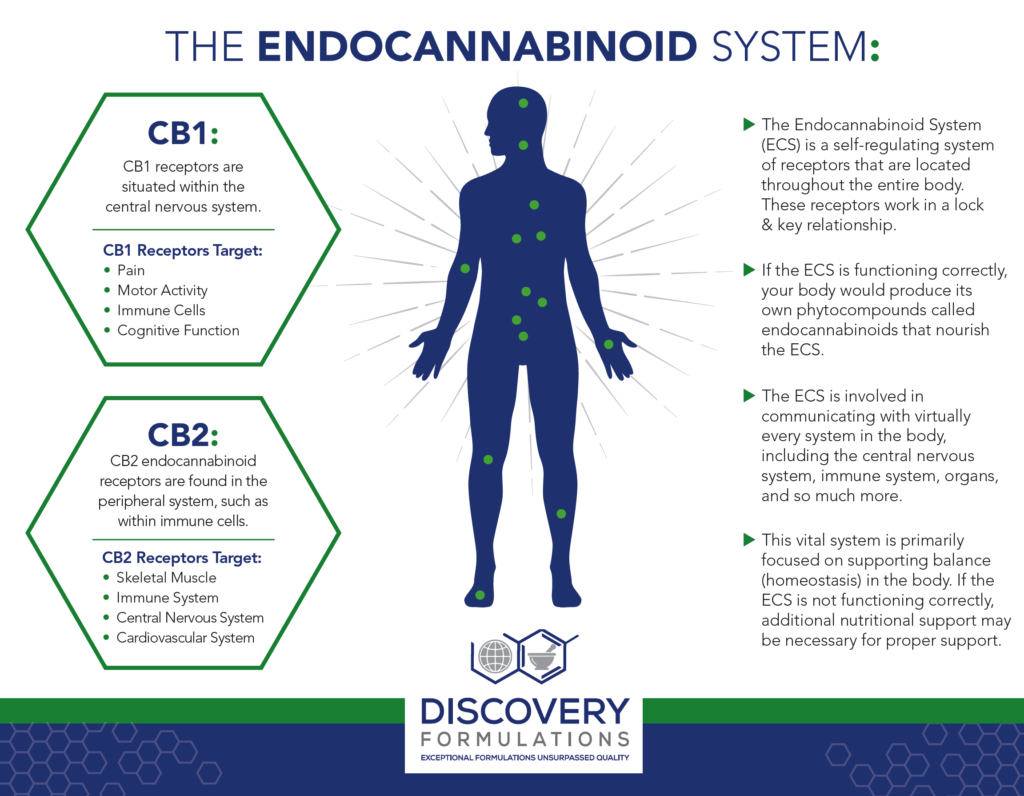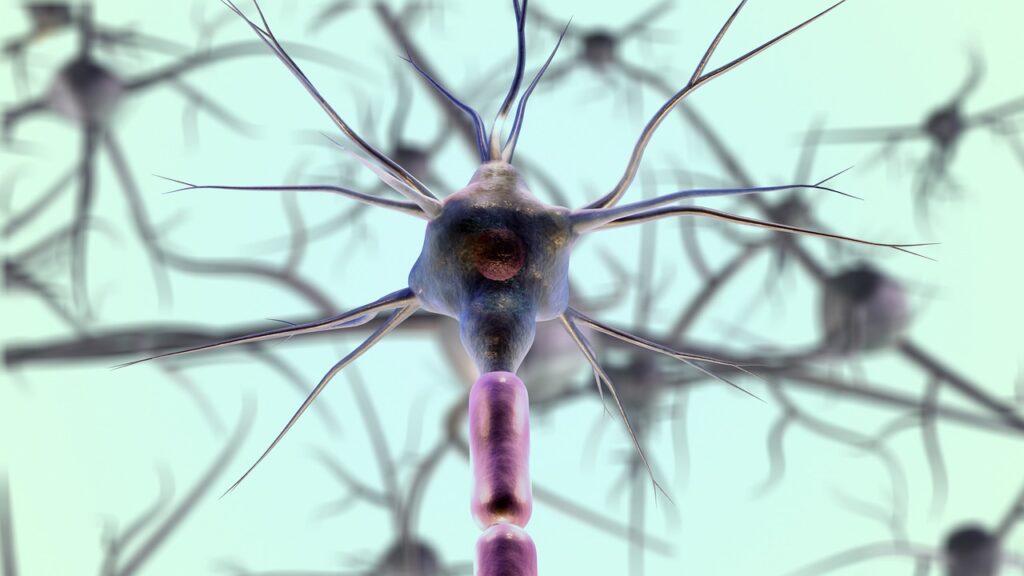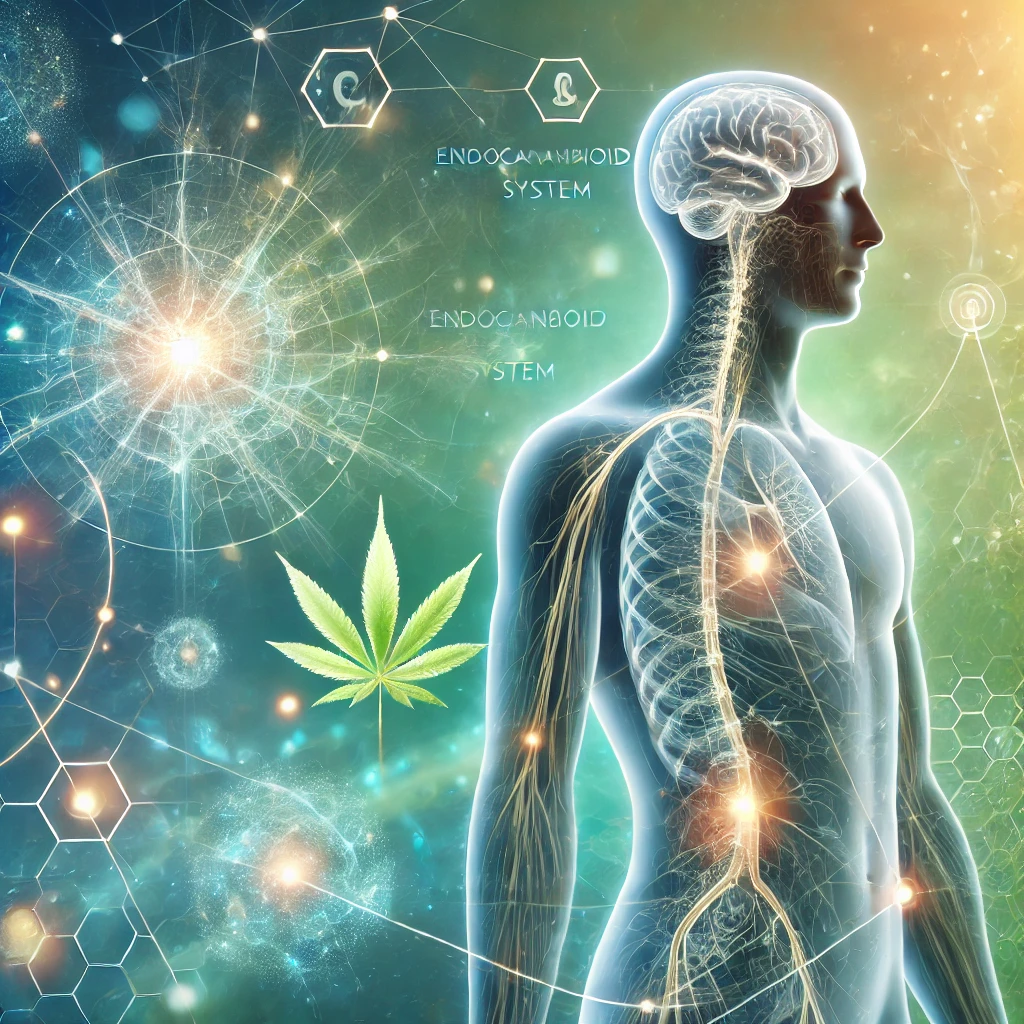
The endocannabinoid system (ECS) is a complex cell-signaling network that plays a crucial role in maintaining physiological balance, or homeostasis, within the human body. Discovered in the late 20th century, the ECS has since been recognized for its involvement in a wide array of bodily functions, including mood regulation, appetite, pain sensation, and immune response. This system interacts closely with cannabinoids, compounds found in the cannabis plant, but it also produces its own cannabinoids, known as endocannabinoids.
Discovery and Components of the ECS
The journey into understanding the ECS began with the isolation of Δ9-tetrahydrocannabinol (THC), the primary psychoactive component of cannabis, in the 1960s. This discovery led researchers to identify specific receptors in the human body that interact with THC and other cannabinoids. These receptors, termed cannabinoid receptors, are primarily of two types: CB1 and CB2.
- CB1 Receptors: Predominantly found in the central nervous system, including the brain and spinal cord, CB1 receptors are responsible for mediating many of the psychoactive effects of THC. They influence functions such as memory processing, motor regulation, and pain sensation.
- CB2 Receptors: Located mainly in peripheral tissues and immune cells, CB2 receptors play a significant role in modulating immune responses and inflammation.
Endocannabinoids are lipid-based neurotransmitters produced naturally by the body. The two most studied endocannabinoids are anandamide (AEA) and 2-arachidonoylglycerol (2-AG). These molecules bind to CB1 and CB2 receptors to regulate various physiological processes.
How the ECS Works

Functions of the Endocannabinoid System
The ECS is integral to maintaining homeostasis by regulating several critical functions:
The ECS operates through a feedback loop. When the body experiences stress or an imbalance, endocannabinoids are produced and bind to cannabinoid receptors, which then initiate a response to restore balance. For instance, if you’re in pain, endocannabinoids might bind to CB1 receptors in your brain to reduce the sensation of pain. Once the balance is achieved, enzymes break down the endocannabinoids to prevent overactivity.
- Pain Management: Endocannabinoids modulate pain perception by inhibiting the transmission of pain signals in the nervous system. This has implications for treating chronic pain conditions.
- Mood and Stress Response: The ECS influences mood regulation and stress responses. Endocannabinoid activity can affect emotional states, potentially offering therapeutic avenues for mood disorders.
- Appetite and Metabolism: CB1 receptors in the hypothalamus play a role in appetite stimulation and energy balance, impacting body weight and metabolic processes.
- Immune Function: By interacting with CB2 receptors on immune cells, the ECS can modulate immune responses, reducing inflammation and potentially influencing autoimmune conditions.
- Neuroprotection: The ECS may protect neurons from damage, contributing to neuroplasticity and offering potential benefits in neurodegenerative diseases.
Cannabinoid Receptors: CB1 and CB2
Cannabinoid receptors are integral to the functioning of the ECS. They are G-protein-coupled receptors that mediate the effects of endocannabinoids and phytocannabinoids:
- CB1 Receptors: These are primarily located in the brain and central nervous system. They play a crucial role in pain sensation, mood regulation, appetite control, and memory processing. CB1 receptors are the primary targets for THC, the psychoactive compound in cannabis.
- CB2 Receptors: Found mostly in the peripheral organs and immune cells, CB2 receptors are involved in modulating immune responses and inflammation. They are the primary focus when considering the anti-inflammatory effects of cannabinoids.
The distribution of these receptors across different body systems explains the wide-ranging effects of the ECS on human health.
The Entourage Effect: How Cannabinoids Work Together
The “Entourage Effect” highlights the synergistic relationship between various cannabinoids, terpenes, and other compounds found in cannabis. This interaction amplifies their individual effects, creating a more powerful therapeutic impact. Each cannabinoid, like CBD, CBG, CBN, and CBC, plays a unique role:
- CBC: Noted for its potential in pain relief and anti-inflammatory effects. – What are the benefits of CBC?
- CBD: Known for its calming and anti-inflammatory properties. – What are the benefits of CBD?
- CBG: Often referred to as the “mother of all cannabinoids,” with potential neuroprotective benefits. – What are the benefits of CBG?
- CBN: Associated with sedative effects, helpful in sleep disorders. – What are the benefits of CBN?
Potential Therapeutic Applications of Targeting the ECS
The Endocannabinoid System (ECS) is increasingly recognized for its therapeutic potential. Targeting the ECS through cannabinoids and other compounds could offer treatments for a variety of conditions:
- Pain Management: Cannabinoids that activate CB1 receptors in the brain can be potent analgesics. They are particularly effective in treating chronic pain conditions where traditional painkillers may fail.
- Mental Health: The ECS plays a significant role in regulating mood and anxiety. Cannabinoids like CBD, which modulate ECS activity without producing psychoactive effects, are being studied for their potential in treating anxiety, depression, and PTSD.
- Neuroprotection: The ECS is involved in neuroprotective processes, making it a target for treating neurodegenerative diseases like Alzheimer’s and Parkinson’s. Cannabinoids can reduce neuroinflammation and oxidative stress, which are key contributors to these conditions.
- Inflammatory and Autoimmune Diseases: Through the activation of CB2 receptors, cannabinoids can modulate immune response, reducing inflammation in conditions such as rheumatoid arthritis, Crohn’s disease, and multiple sclerosis.
- Metabolic Disorders: The ECS is implicated in metabolic regulation, and its dysfunction is linked to obesity and type 2 diabetes. Targeting the ECS may help restore metabolic balance and reduce the risk of related conditions.
Endocannabinoid Deficiency and Related Conditions
Clinical Endocannabinoid Deficiency (CED) is a theory suggesting that low endocannabinoid levels can contribute to the development of various chronic conditions. This deficiency may play a role in:
- Migraine: Research suggests that an imbalance in endocannabinoid levels might be linked to the onset of migraines, which are often resistant to conventional treatments.
- Fibromyalgia: Patients with fibromyalgia often suffer from chronic pain and fatigue, conditions that are believed to be influenced by a deficient ECS.
- Irritable Bowel Syndrome (IBS): The ECS is involved in regulating gut function, and deficiencies in endocannabinoid signaling may contribute to IBS symptoms like pain, bloating, and altered bowel habits.
- Mood Disorders: Depression, anxiety, and other mood disorders may be linked to an underactive ECS, leading to insufficient regulation of neurotransmitters that affect mood.
Understanding and correcting endocannabinoid deficiencies could open new avenues for treating these challenging conditions.

ECS and Pain Management
The ECS is a key player in the body’s ability to manage pain. By interacting with CB1 and CB2 receptors, cannabinoids can modulate pain signals and reduce inflammation. This makes the ECS a promising target for developing new pain management therapies, especially for chronic pain conditions like neuropathy, arthritis, and cancer-related pain.
ECS and Mental Health
The ECS has a profound impact on mental health. It regulates neurotransmitters that influence mood, stress response, and emotional stability. Targeting the ECS, particularly through the use of non-psychoactive cannabinoids like CBD, offers the potential for treating a range of mental health conditions, including anxiety, depression, and PTSD.
ECS and the Immune System
The ECS plays a crucial role in modulating the immune system, primarily through CB2 receptors. These receptors are predominantly found in immune cells and help regulate inflammation and immune responses. By activating CB2 receptors, cannabinoids can reduce excessive inflammation, which is beneficial in conditions like autoimmune diseases and chronic inflammatory disorders. This immunomodulatory effect of the ECS is also why cannabinoids are being explored as potential treatments for conditions such as multiple sclerosis, rheumatoid arthritis, and other inflammatory diseases.
Interaction Between the Endocannabinoid System and Cannabis
Cannabis interacts directly with the ECS, with its cannabinoids like THC and CBD binding to the same receptors as the body’s endocannabinoids. THC primarily binds to CB1 receptors, producing psychoactive effects and influencing pain, appetite, and mood. CBD, on the other hand, has a more complex interaction, often modulating the effects of THC and interacting with both CB1 and CB2 receptors indirectly. The interaction between cannabis and the ECS is the basis for its therapeutic effects, making it a valuable tool in managing various conditions, from chronic pain to epilepsy.
.
Conclusion
The Endocannabinoid System (ECS) is a crucial, yet often overlooked, component of human health. It plays a significant role in maintaining homeostasis by regulating various physiological processes such as pain, mood, appetite, and immune function. As research into the ECS expands, so does our understanding of its potential in therapeutic applications, particularly in managing chronic pain, mental health disorders, and inflammatory conditions. By exploring the ECS and its interaction with cannabinoids, we gain valuable insights into how to leverage this system for improving overall health and well-being.
Understanding and potentially modulating the ECS could unlock new avenues for treatment, offering hope for those suffering from conditions linked to ECS dysfunction. As the science progresses, the ECS may well become a cornerstone in the future of medicine.
